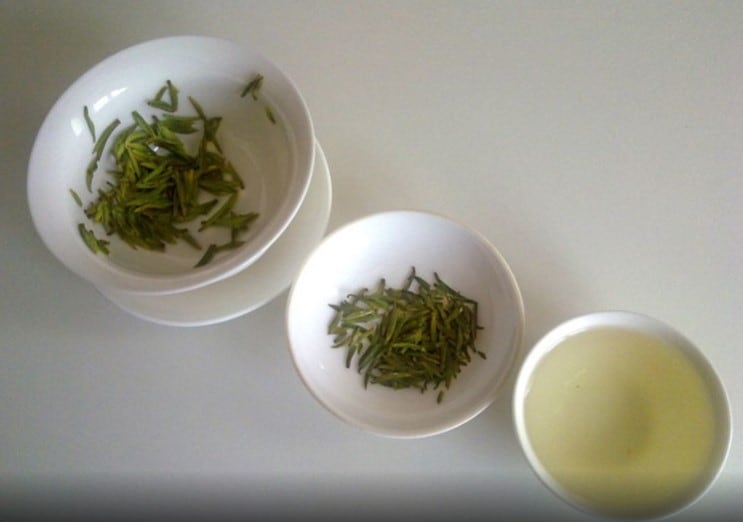The research team identifies two catechin-type flavonoid compounds, epicatechin gallate (ECG) and epigallocatechin-3-gallate (EGCG), that each activate the ion channel protein, KCNQ5.
This ion channel controls potassium ions’ movement in and out of cells determining cellular excitability and also the relaxation of blood vessels.
“We found by using computer modelling and mutagenesis studies that specific catechins bind to the foot of the voltage sensor, which is the part of KCNQ5 that allows the channel to open in response to cellular excitation,” outlines Geoffrey Abbott, a professor in the Department of Physiology and Biophysics at the UCI School of Medicine.
“This binding allows the channel to open much more easily and earlier in the cellular excitation process."
Despite the research into tea’s health benefits, the mechanism behind its therapeutic properties remains partially understood.
The leaves of Camellia sinensis contain polyphenols specifically epicatechin (EC), epigallocatechin (EGC), ECG, and EGCG, all well known for their antioxidant properties and possible anticancer and cardiovascular health benefits.
The fermentation process of the leaves that results in the different tea varieties causes the oxidisation of catechins, resulting in green tea containing a higher concentration of catechins.
KCNQ5’s multiple roles
The University of Copenhagen and the University of California, Irvine team applied electrophysiology, myography, mass spectrometry and in silico docking to molecular mechanisms of tea and its components on KCNQ channels and arterial tone.
The study’s premise was based on KCNQ5’s multiple roles. As well as controlling vascular tone, the protein is expressed in the brain, where it regulates electrical activity and signalling between neurons.
Catechins can cross the blood-brain barrier and the discovery of their ability to activate KCNQ5 may suggest a future mechanism to fix broken KCNQ5 channels to address brain disorders such as epileptic encephalopathy.
One observation from the study revealed the addition of milk prevented the beneficial KCNQ5-activating effects of black tea.
In its discussions, the study concludes that in the in vitro experiments, milk constituents bound to black tea polyphenols and prevented them from activating KCNQ5, but that when ingested, this binding would be released, e.g., in the stomach, releasing of polyphenols into a free state permitting KCNQ5 activation.
“The overall human plasma levels of total tea-derived phenols peak at 400 µM about an hour after a single cup of black tea.
“Depending on how much of this constitutes ECG, EGCG and KCNQ5-active EGCG derivatives, this is well within the concentration range where we see robust effects on KCNQ5 activation and vasodilation.
“This strongly supports the contention that polyphenol activation of KCNQ5 underlies at least some of the vascular health benefits of tea.”
"We don't believe this means one needs to avoid milk when drinking tea to take advantage of the beneficial properties of tea,” adds Abbott.
“We are confident that the environment in the human stomach will separate the catechins from the proteins and other molecules in milk that would otherwise block catechins' beneficial effects."
Future research areas
Further findings by the team found that warming green tea to 35 degrees Celsius altered its chemical composition rendering it more effective at activating KCNQ5.
"Regardless of whether tea is consumed iced or hot, this temperature is achieved after tea is drunk, as human body temperature is about 37 degrees Celsius," adds Abbott. "Thus, simply by drinking tea we activate its beneficial, antihypertensive properties."
The team suggested future studies may also target clarification of the molecular changes that occur in EGCG upon heating to body temperature that enhance its KCNQ5 activation efficacy (after prior heating to 35°C herein) and permit it to relax arteries (studies conducted at 37°C herein).
“In summary, activation of the vascular and neuronal KCNQ5 potassium channel contributes significantly to vasodilation by both green and black tea,” the study concludes.
“The tea polyphenols ECG and EGCG are major contributors to this effect, via hyperpolarization of the voltage dependence of KCNQ5 activation. ECG and EGCG or optimized derivatives of these compounds are candidates for future anti-hypertensive drug development.”
Source: Cellular Physiology and Biochemistry
Published online: DOI: 10.33594/000000337
“KCNQ5 Potassium Channel Activation Underlies Vasodilation by Tea.”
Authors: Kaitlyn Redford et al.


